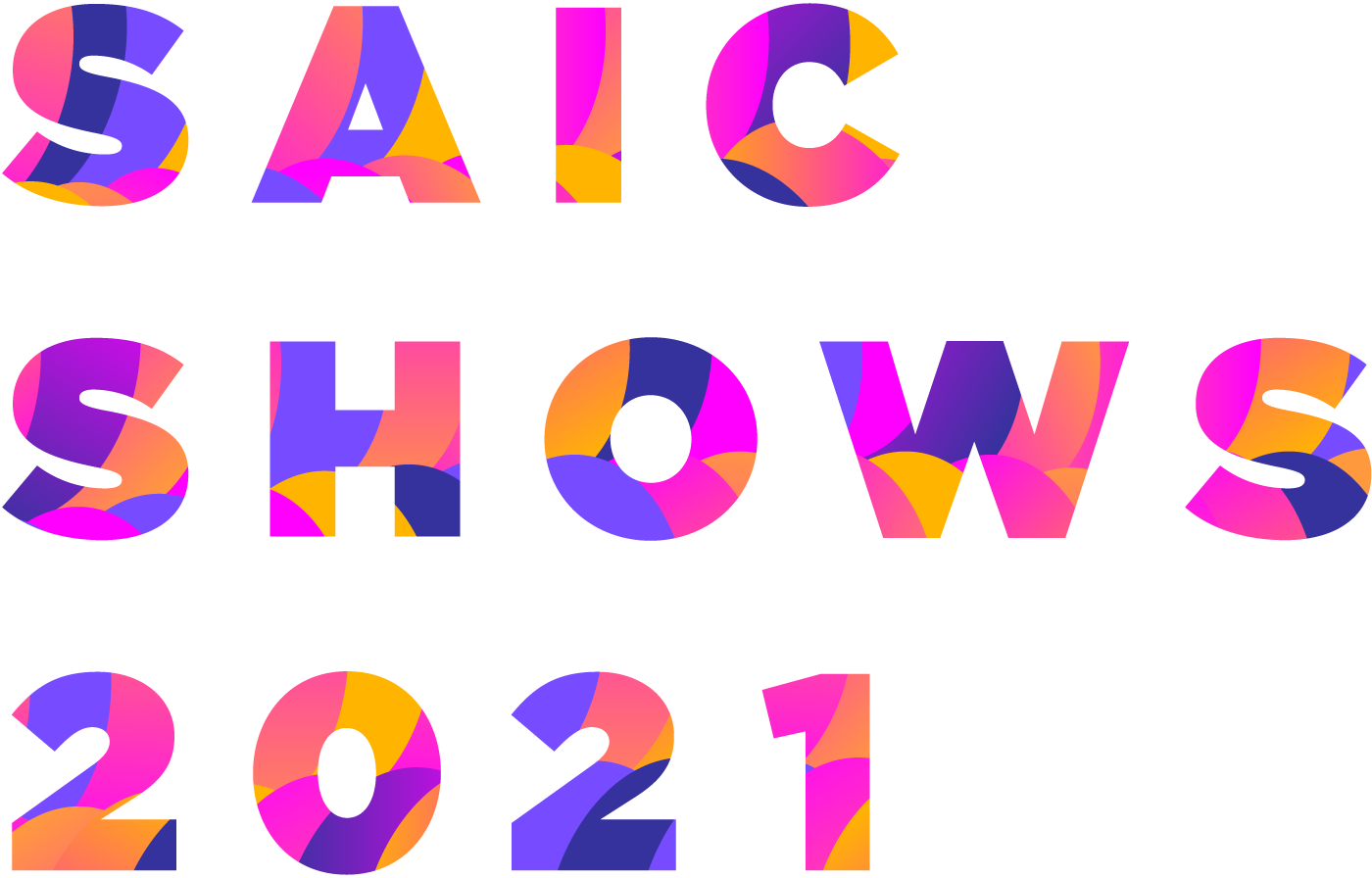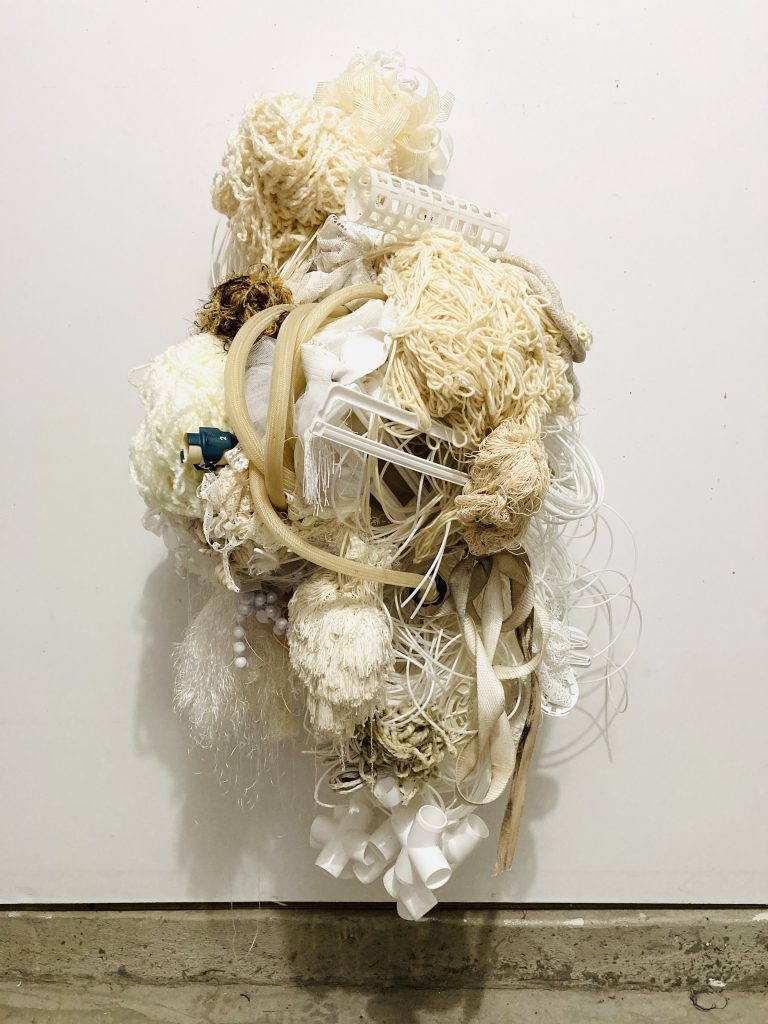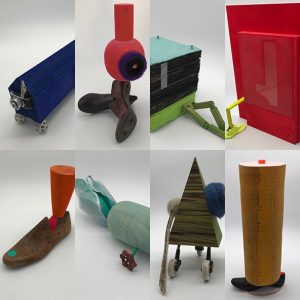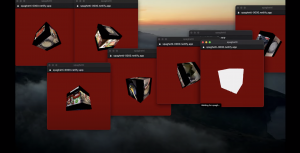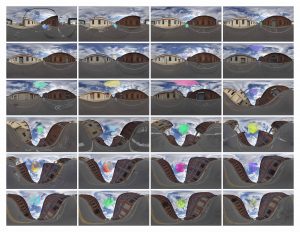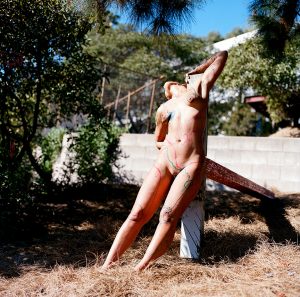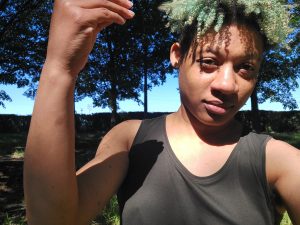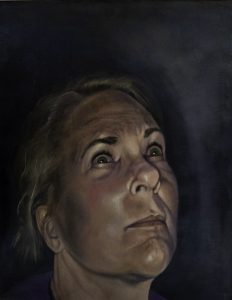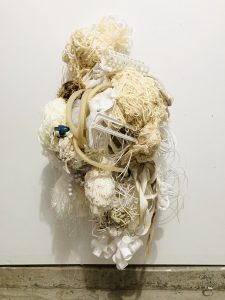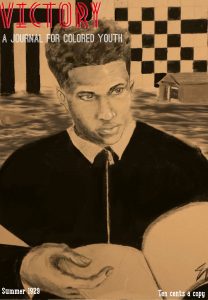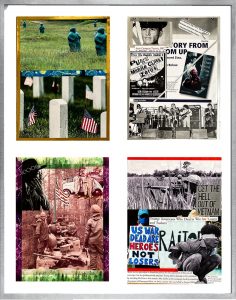Alicia Thompson is an artist and creativity coach whose work is largely informed by individual and collective trauma and transformation. Alicia received her BFA from the Pennsylvania Academy of the Fine Arts and currently lives in Nashville, TN. She has exhibited her work at A1 Labarts in Knoxville, the Green Gallery at Turnip Green Creative Reuse in Nashville, and currently has work in the new members show at COOP Gallery, also in Nashville.
I am a visual artist working with themes of value, consciousness, and transformation. My practice is primarily driven by the exploration of the formal material qualities of objects. I am obsessed with discarded objects, which I often find to be quite beautiful. Visually, I think a deflated party balloon is stunning. Discarded costume jewelry, precious. I have an unusual eye for what constitutes beauty that is different from what is normally ascribed. I find beauty in a popsicle wrapper laying in the grass on the side of the road. I find beauty in the mundane, beauty in the everyday objects that we repeatedly use, beauty in the kitsch and cliché, beauty in the discarded hopes and expectations that were once assigned to those objects, now forlorn, I find beauty in their entropic state.
I use surplus and discarded materials to create works on paper, on canvas, and three-dimensional pieces that are mounted onto the wall, hang from the ceiling, or sit on the floor. I choose materials for their glossy surface, radioactive color, and plastic form. The materials are often frugal and disposable; used on an occasion and then discarded. Some examples include party supplies: balloons, garlands, florescent or iridescent ribbons or curtains, and cheerleader’s abandoned props. I primarily acquire these materials from a non-profit organization that collects community items that are destined for a landfill. Thus, my practice is an exploration of materials that I change or alter the original function and through the juxtaposition of additional materials that ordinarily would not go together, new meaning is made. In this process, the surplus materials are cultural markers that suggest absurdity and misplaced priority. Refuse. Recycle. Re-use. Re-form. Re- imagine.
While my artworks are driven by what the discarded materials behave like and how they appear, there is also an emotional element that affects me. I have a sense that much of humanity is living in a way that is deeply dissatisfying on a spiritual level. Humanity is at odds with our natural environment and the situation is untenable. I believe this is evidenced by the amount of biological and psychological illness and addiction found present within western society. My work explores disharmony as illness by contemplating the specific arena of consumerism as a substitute for spirituality. Ultimately, my practice engages with this disharmony on a societal level, while trying to heal and understand it on a personal and spiritual level.
